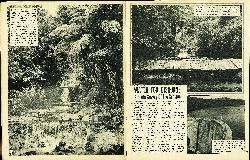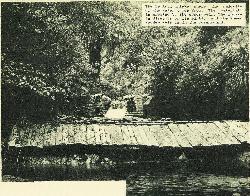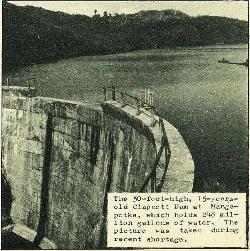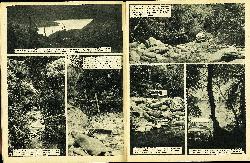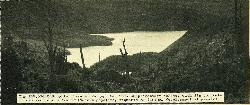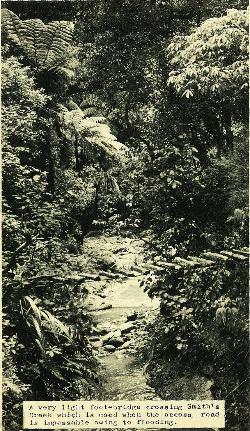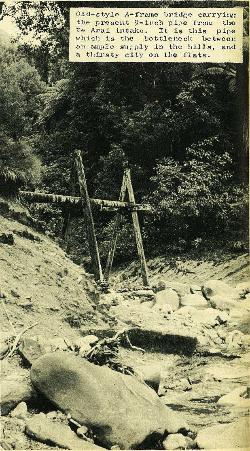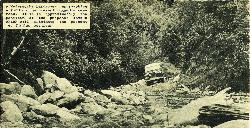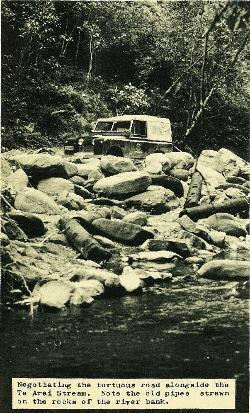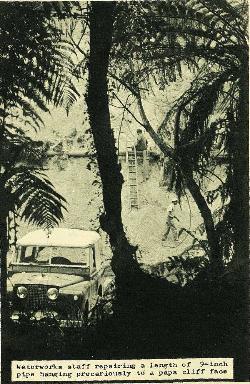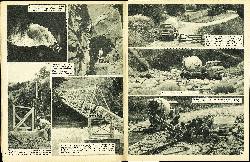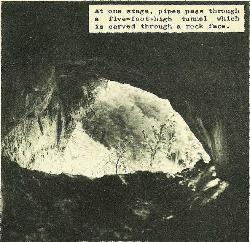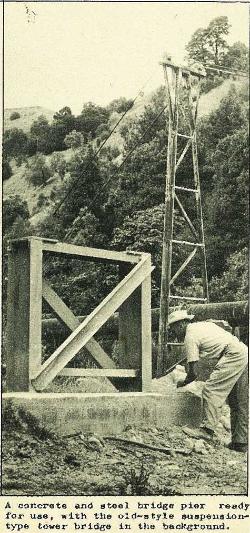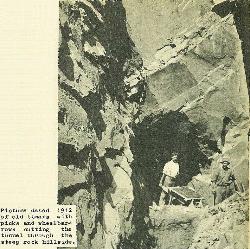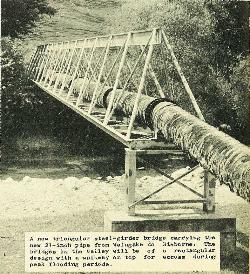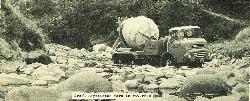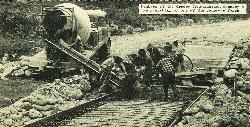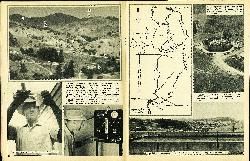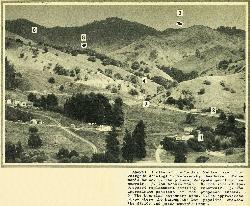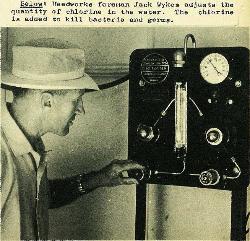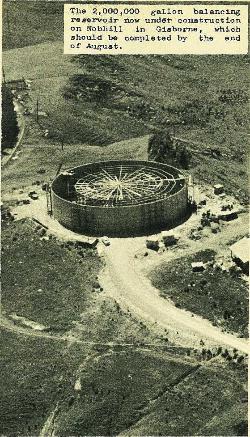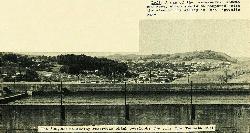11
Water For Gisborne
A Photo Survey Of The Scheme
Gisborne's water supply scheme, and its development in the Te Arai Valley, was the subject of much criticism earlier this month when hosing restrictions were imposed.
Development work, costing £220,000, which is estimated to satisfy the needs of the city until the year 2000, is being undertaken as fast as possible, and should be completed by the end of summer in 1965. Unfortunately, the ruggedness of the country enables work to be undertaken only during the summer months.
Included in this works programme in order of preference is: a three-mile access road from the Waingake settlement to the site of the proposed intake, which with 16 concrete fords and 12 cattle stops, will cost £50,000; the building of a new settling reservoir 100 feet higher than the present one; the construction of a new intake quarter of a mile downstream from the present one; the laying of half a mile of 21-inch pipe to the settling tank, and the laying of 2½ miles of 18-inch pipe from the new settling tank to the intake, which will require 12 concrete and steel girder bridge trusses for river crossings.
At present, 75% of the requirements for the city, which at peak periods consumes 2,500,000 gallons a day, are drawn from the Te Arai Stream, with the remainder coming from Smith's Creek and the Mangapoike Dam about five miles away over the divide.
The Te Arai intake where the majority of the water comes from. The waterfall is created by the upper weir. The intake is directly on its right, and the lower wooden weir is in the foreground.
The 50-foot-high, 15-years-old Clapcott Dam at Mangapoike, which holds 248 million gallons of water. The picture was taken during recent shortage.
12
The 248,000,000 gallon lake at Mangapoike. This supplementary scheme, with its concrete dam and four miles of l8–inch pipeline, requires no further development at present
A very light foot-bridge crossing Smith's Creek which is used when the access road is impassable owing to flooding.
Old-style A-frame bridge carrying the present 9-inch pipe from the Te Arai Intake. It is this pipe which is the bottleneck between an ample supply in the hills, and a thirsty city on the flats.
13
A Waterworks Landrover approaching a ford on the present rugged access road. It ia in approximately the position of the proposed intake which will eliminate the present two further upstream.
Negotiating the tortuous road alongside the Te Arai Stream. Note the old pipes strewn on the rocks of the river bank.
Waterworks staff repairing a length of 9-inch pipe hanging precariously to a papa cliff face
14
At one stage, pipes pass through a five-foot-high tunnel which is carved through a rock face.
A concrete and steel bridge pier ready for use, with the old-style suspension-type tower bridge in the background.
Picture dated 1912 of old timers with picks and wheelbarrows cutting the tunnel through the steep rock hillside.
A new triangular steel-girder bridge carrying the new 21-inch pipe from Waingake to Gisborne. The bridges in the valley will be of a rectangular design with a walkway on top for access during peak flooding periods.
15
A Mobile Concrete truck, with a load of concrete for a ford under construction up the access road, moving over one of the many cattle-stops. In the background is the half empty Waingake reservoir.
Truck negotiates ford in riverbed
Members of the Crosby Construction Company's gang working on one of the concrete fords
16
A view of the Te Arai Valley taken from Waingake showing: 1. Waterworka headwater foreman's house, 2. The present Waingake settling reservoir. 3. The access road. 4. The site of the proposed replacement settling reservoir. 5. The approximate position of the proposed intake. 6. The bushclad catchment area. 7.The approximate place where the Mangapoike Dam pipeline crosses the divide and joins Smith's Creek.
Foreman Wykes making his daily chlorine teat
Headworks foreman Jack Wykes adjusts the quantity of chlorine in the water. The chlorine is added to kill bacteria and germs.
17
A map of the waterworks scheme and area, which should be compared with the view of the valley on the opposite page
The 2,000,000 gallon balancing reservoir now under construction on Nobhill in Gisborne, which should be completed by the end of August.
The 800,000 balancing reservoir which overlooks the city from Taumata Hill


